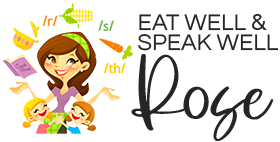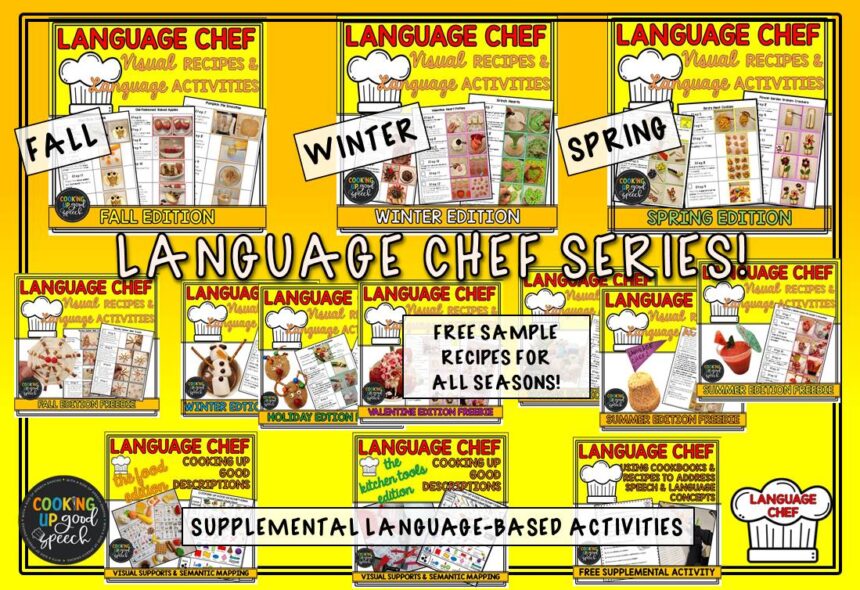
CRITICAL THINKING is the ability to analyze, evaluate, and synthesize information in a rational and logical manner to make well-informed decisions or judgments. Many of the students we serve on our caseloads and teach in our classrooms need to strengthen this higher-level language skill area. When applying CRITICAL THINKING to teaching children how to cook, first consider their age, skill level, and prior knowledge. Always start with simple recipes and concepts and gradually progress to more complex ones as they build their cooking abilities. Let’s look at several ways cooking can help strengthen CRITICAL THINKING skills!
#1—Problem-solving:
While cooking, children might encounter unexpected challenges, such as missing ingredients or utensils. They must think on their feet, come up with creative solutions, and adapt their approach to resolving the issues.
#2—Cause and effect:
Cooking allows children to see the direct results of their actions. For example, if they add too much salt, they will taste the consequences; if they put solid butter in the microwave for several seconds, it will get hot and melt. This helps them grasp the cause-and-effect relationship and learn from their actions, choices, and mistakes.
#3—Inferencing:
Cooking a recipe requires more than just following the instructions word for word; it often involves making inferences based on context and prior knowledge. Here are some examples of how a child might need to make inferences while cooking a recipe:
- Ingredient substitutions: If a child realizes they’re missing a particular ingredient while cooking, they may need to infer a substitute that will work in place of the original ingredient. ie: “Can I substitute white sugar for brown sugar” or “Can I use oil in place of butter?”
- Adjusting cooking times: Sometimes recipes provide approximate cooking times. All ovens and microwaves are different, so even though the directions may tell you to heat in the microwave for one minute, you should infer the need to adjust cooking times based on observing the appearance and doneness of the ingredients.
- Seasoning to taste: Many recipes provide specific measurements for seasonings, but taste preferences differ. A child might need to infer when to trust their taste buds and adjust the seasoning levels to suit their preferences.
#4– Analyzing the foods and recipes:
- Ask children to compare and contrast various cooking methods for specific dishes.
- Have them analyze the impact of different ingredients on the taste and texture of a dish.
#5– Experimentation and creativity:
- While following a recipe, children can also experiment with different ingredients or flavor combinations, fostering their creativity and encouraging them to think critically about the potential outcomes.
- Challenge children to create their own recipes or modify existing ones with new ingredients or techniques.
- Encourage them to plan and prepare a meal from start to finish, incorporating various dishes that complement each other.
#6–Safety awareness:
Cooking may involve working with hot items and sharp tools. Children develop critical thinking regarding safety measures and learn to assess risks while working in the kitchen.
#7– Observation and sensory perception:
Cooking engages all the senses – taste, smell, touch, sight, and sometimes even sound. Children learn to observe the changes in ingredients as they cook, understand how flavors develop, and rely on their sensory perceptions to adjust the dish as needed.
#8– Evaluate the outcome:
Let children taste their own creations and assess the quality of their cooking based on the recipe’s outcome. Encourage them to evaluate the results. I have my students “rate the recipe” by asking them “How challenging was it to make?” ” How good did it taste?” “How likely are you to make it again?” We use a visual rating scale (found in my LANGUAGE CHEF resource).
So the next time you step into the kitchen to prepare a meal at home with your children, or if you are an educator thinking about making a recipe in your next classroom lesson or therapy session, remember that cooking not only teaches kids life skills but also CRITICAL THINKING skills!
Interested in using a COOKING THEME to address communication skills in your classroom or therapy setting? LANGUAGE CHEF can help! LANGUAGE CHEF–The Ultimate Language-Based Recipe Resource allows you to use CRITICAL THINKING strategies. The set of open-ended “Comprehension and Conversation” question task cards included in this resource utilizes Bloom’s Taxonomy and poses questions about the recipes from all levels of the hierarchy: remembering, understanding, applying, analyzing, evaluating, and creating. So many opportunities to practice LANGUAGE, COMMUNICATION, and CRITICAL THINKING!!
I can’t wait to start “Cooking Up Good Speech and Language” with you and your students!












Leave a Reply